Follow these 15 steps to kickstart a successful career in interior design!
To start any new career takes a leap of faith.
To be truly successful at that career takes something more: a solid plan. Otherwise you’re just flying blind and leaving everything to chance.
Let’s face it, most of us can’t afford to drop everything and leave our jobs behind while we make a career change.
So here’s our 15-point plan to help you become an interior designer without risking a thing!
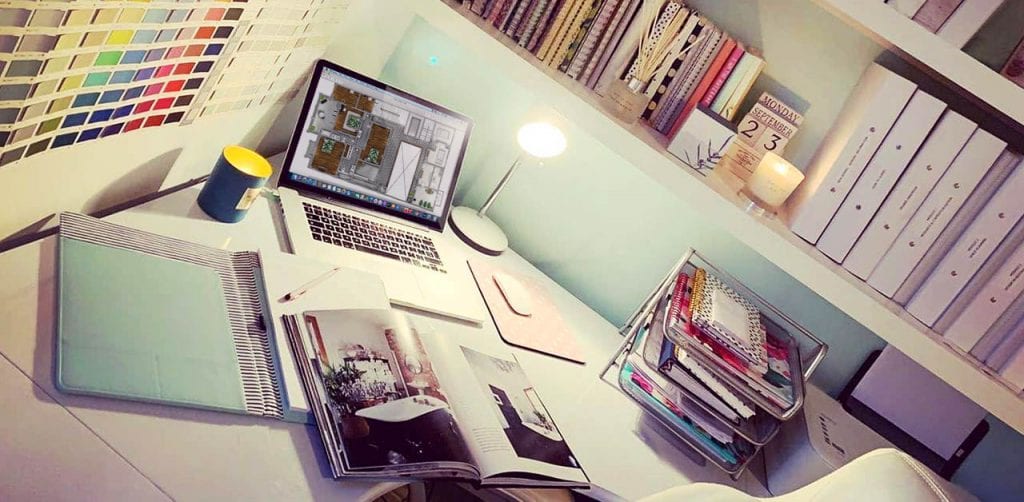
Tips from the Interior Design Experts:
If you’re considering a career change to interior design, you’ve come to the right place.
Our tutors are the best in the interior design business, and have all worked, or still work, as professional interior designers.
They have created this guide to help you plan the path ahead so you can skip the trial and error and start getting paid to drool over beautiful living rooms on Pinterest!
And by the way, now could be a great time to pursue a future in this field. According to market research by Technavio, the global interior design services market will grow by $23.15 billion between now and 2023. That’s a big pie to get a slice of.
So let’s jump in and take a look at 15 steps to follow to launch your new career in interior design.
1. Nurture Your Creativity
Interior design is easy, right? Not so fast… there’s actually a lot of creativity required. If you want to become an interior designer, you’ll need to nurture your creativity and think like a designer.
It takes incredible imagination for a designer to look beyond the dull and dreary scene that’s in front of them and visualise a space transformed. The creative interior designer can imagine a logical layout, harmonious colours, and stylish look even in the most uninspiring rooms.
Developing your creative skills will give you an extra edge and help you innovate and offer something that’s out of the ordinary, rather than following a ‘copycat’ formula. It also broadens your thinking and helps you find more sources of inspiration for your interior design projects.
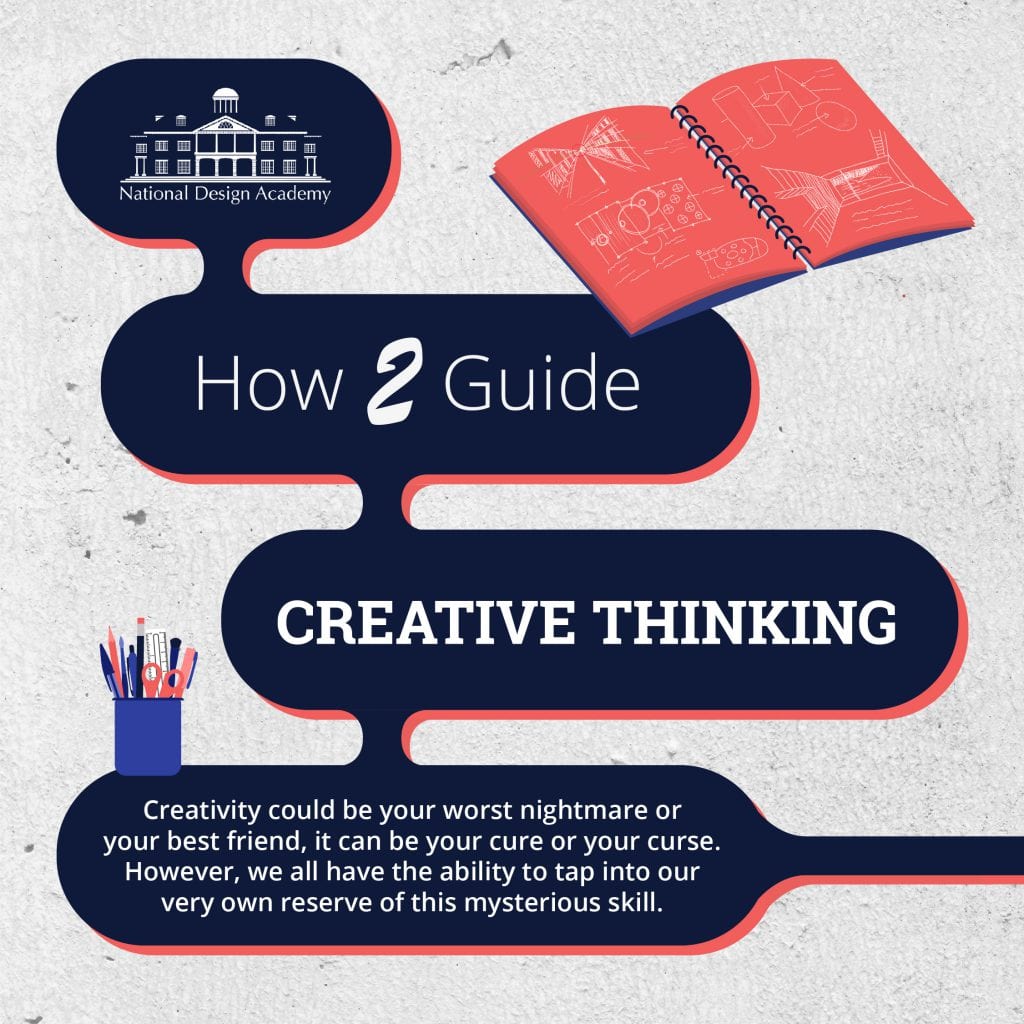
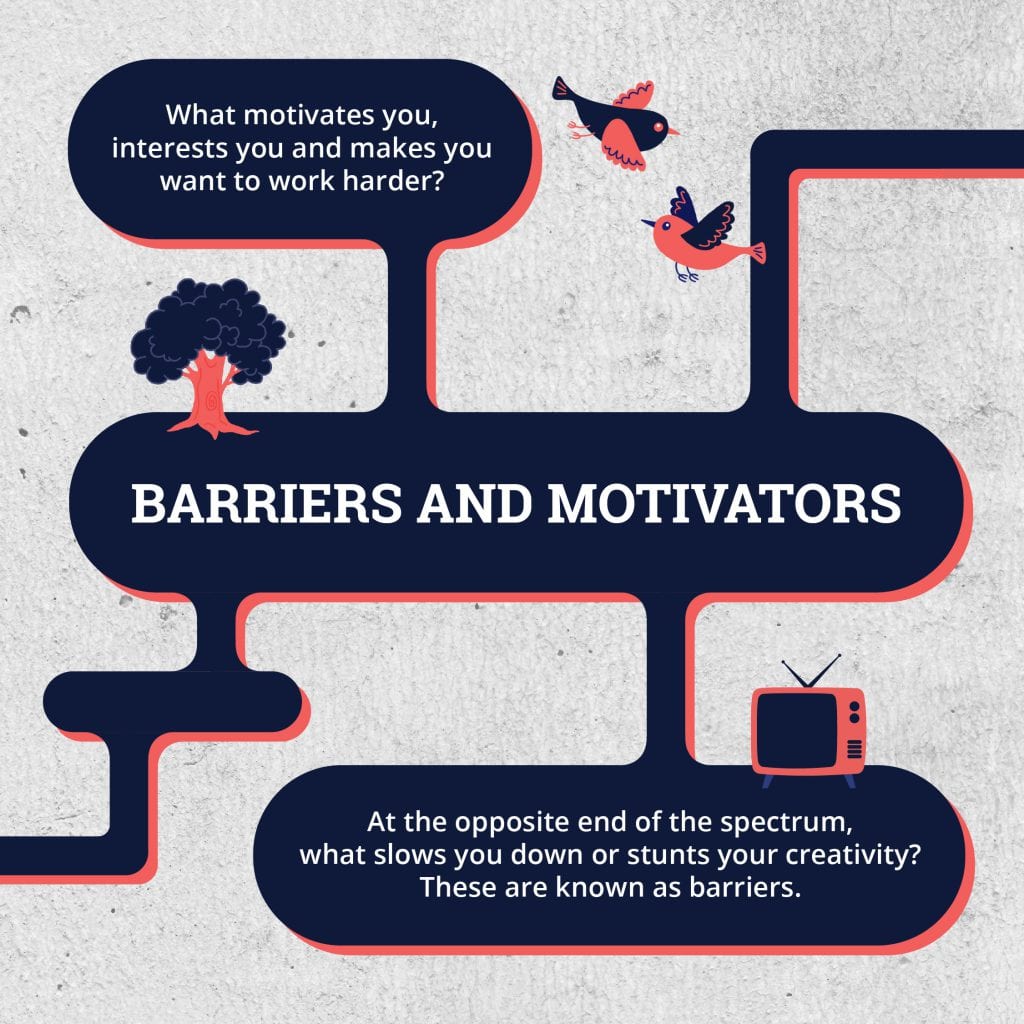
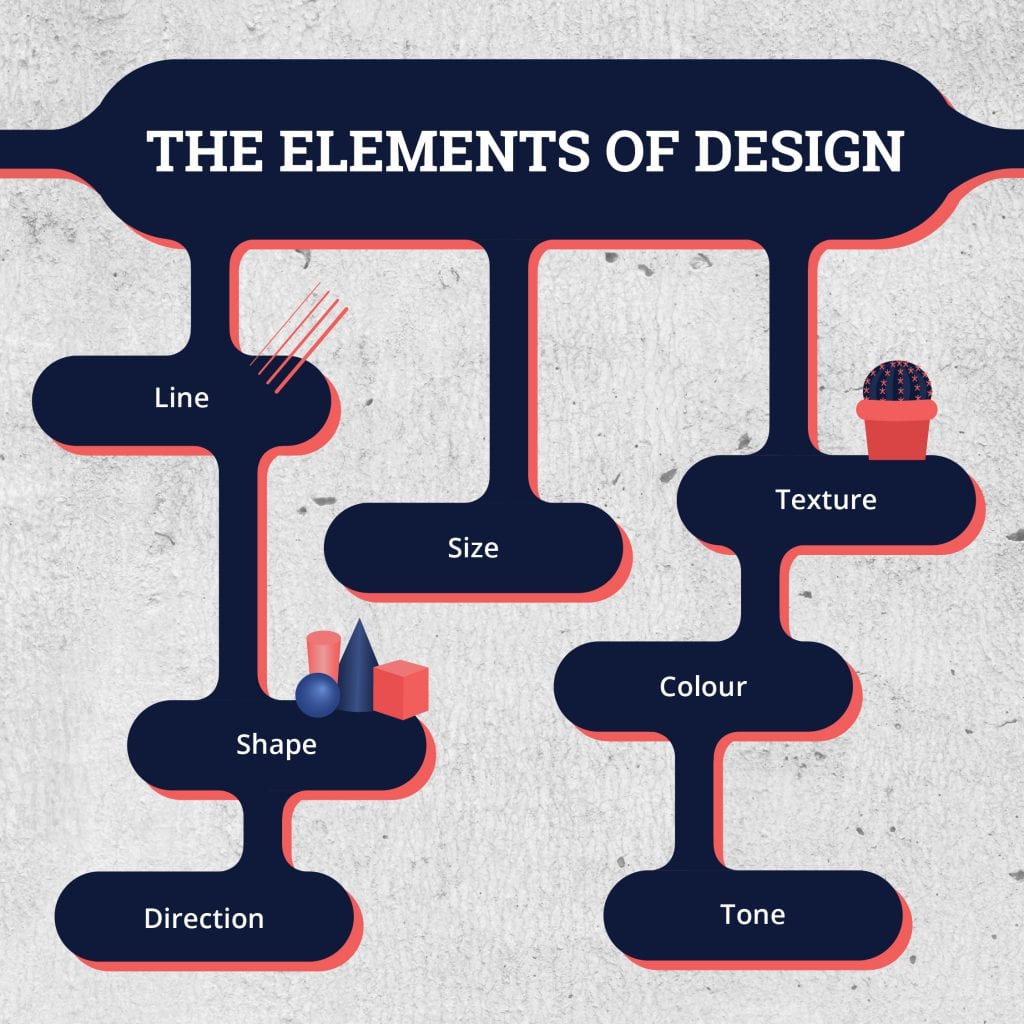
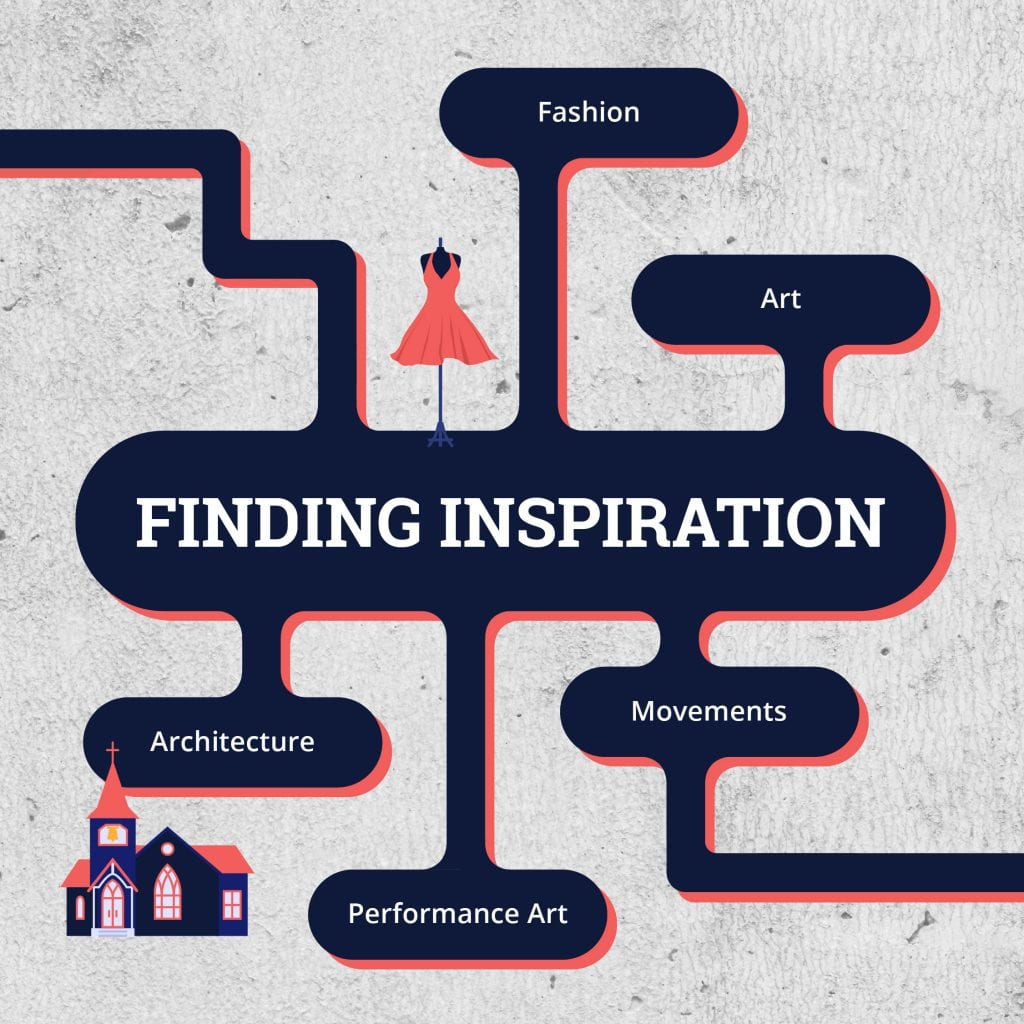
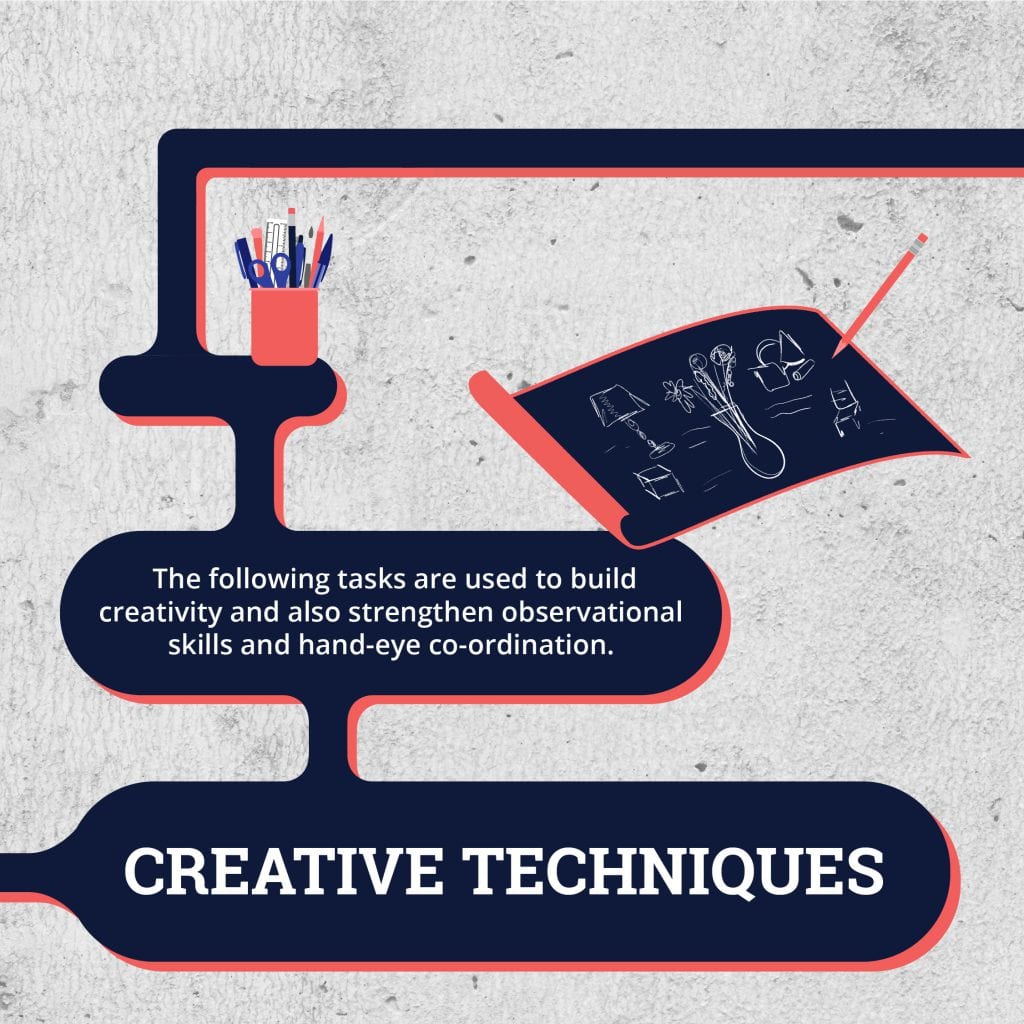
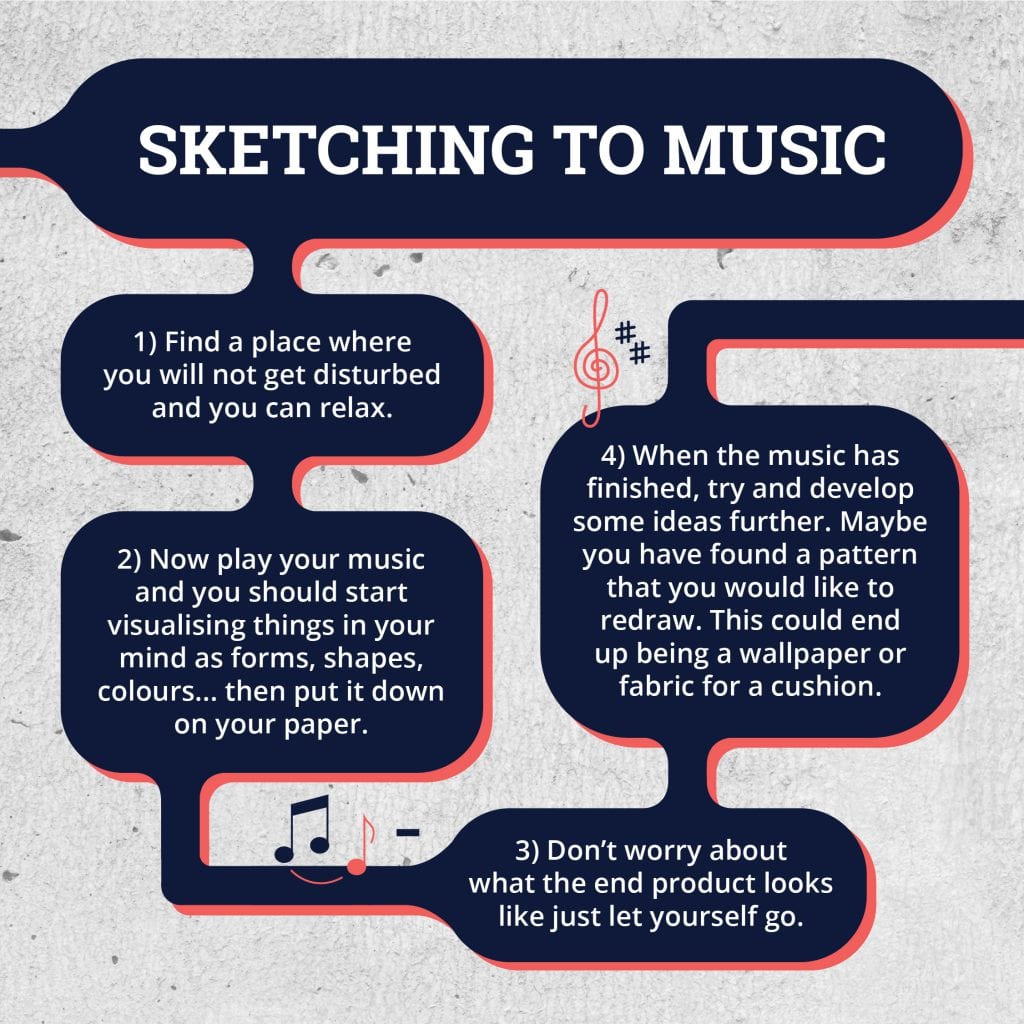
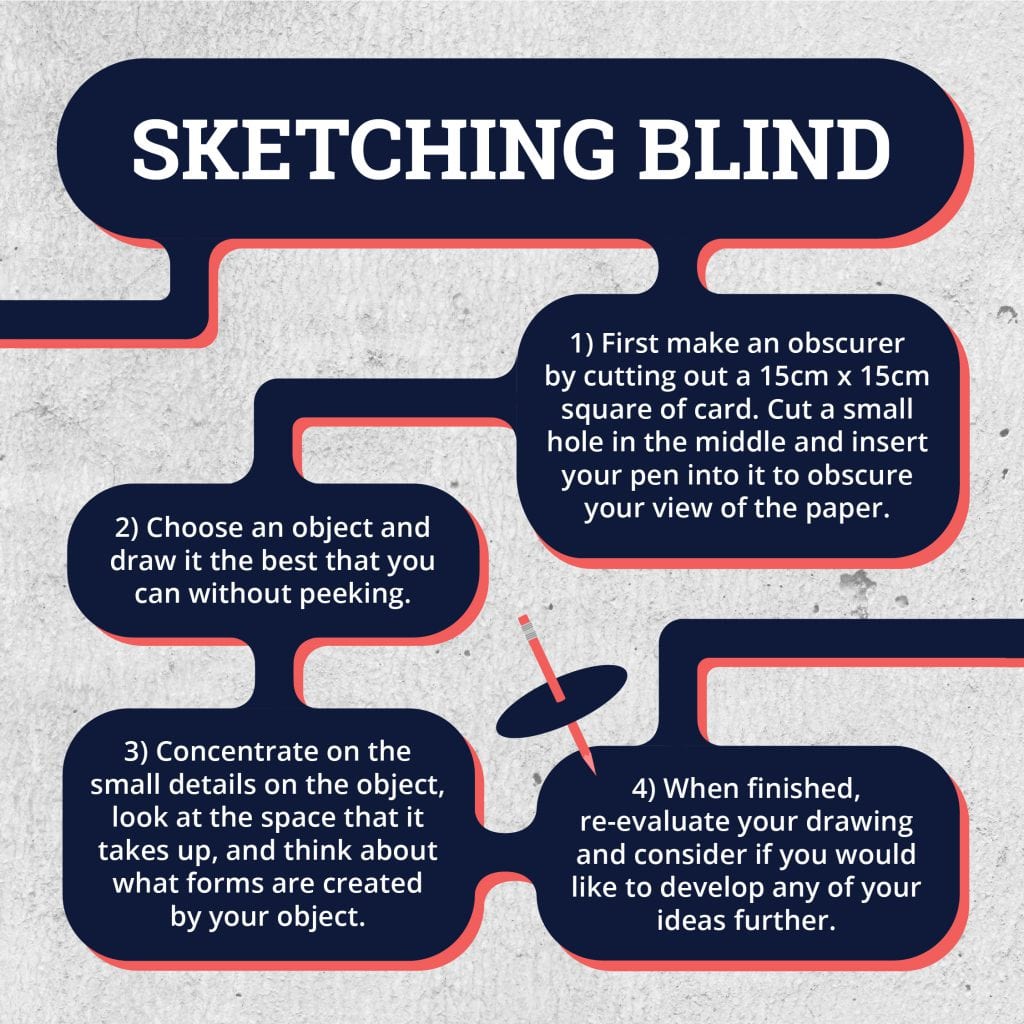
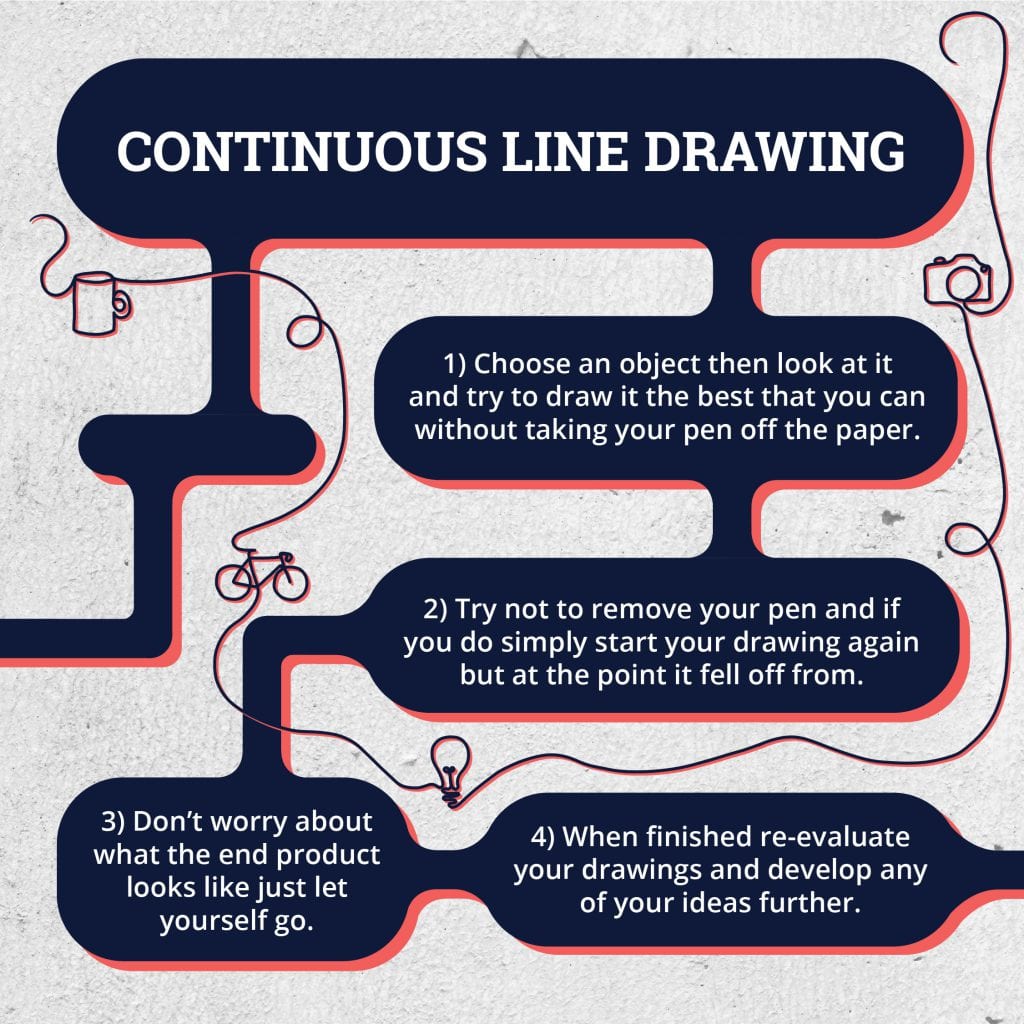
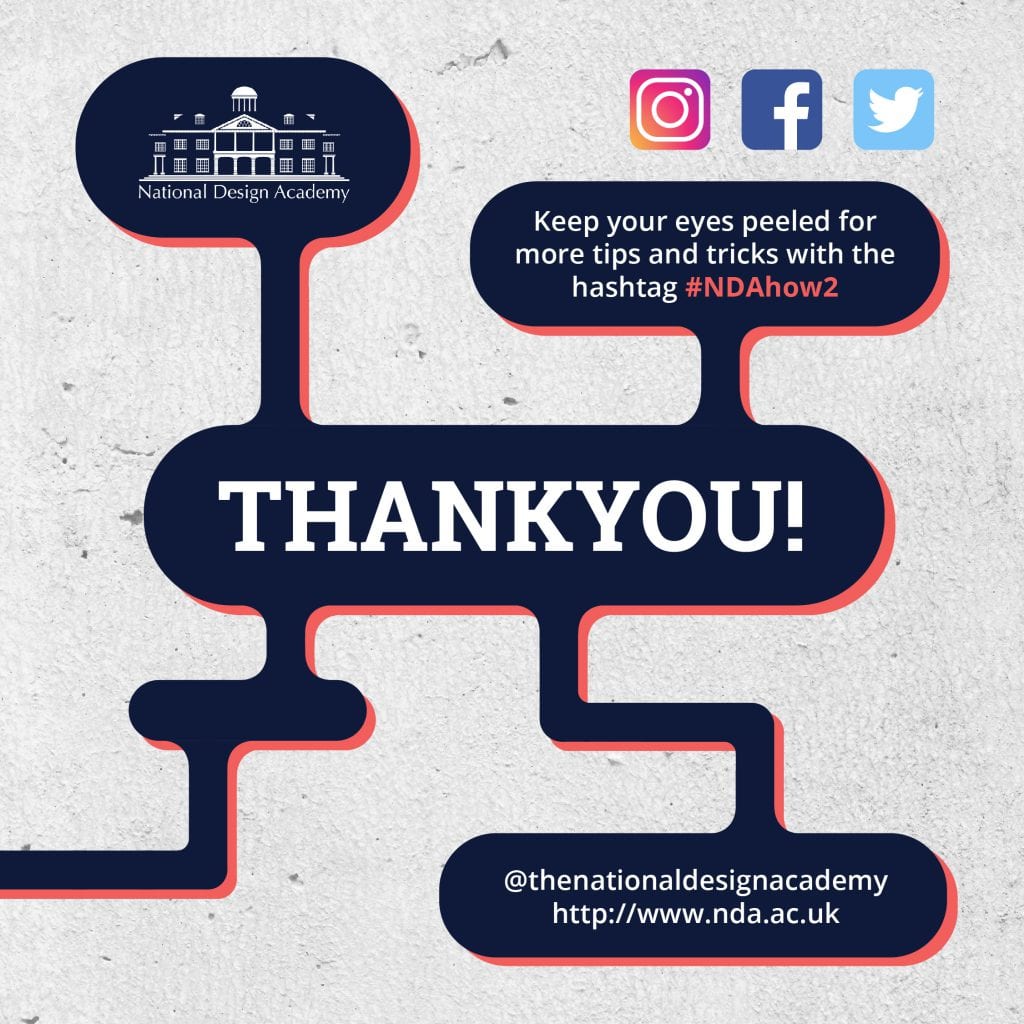
"Pursuing different creative hobbies will get you in the habit of thinking outside the box. Once a creative, always a creative!"
Another key tip? Keep a visual diary.
This is a scrapbook that creatives use to record everything related to design inspiration. It’s important to record everything, even ideas that don’t work out, or just random ‘cool’ designs that you come across during your daily life.
By doing this, your diary can become a valuable resource for ideas when you’re working on a design brief as well as a point of reference or inspiration for future projects.
2. Go Back to School
Sure, interior design is creative and glamorous… But it’s also a serious profession that needs to be backed by solid knowledge and expertise.
If you want to become an interior designer who is taken seriously and who has the confidence to go out and win clients, you’llneed to learn some professional skills.
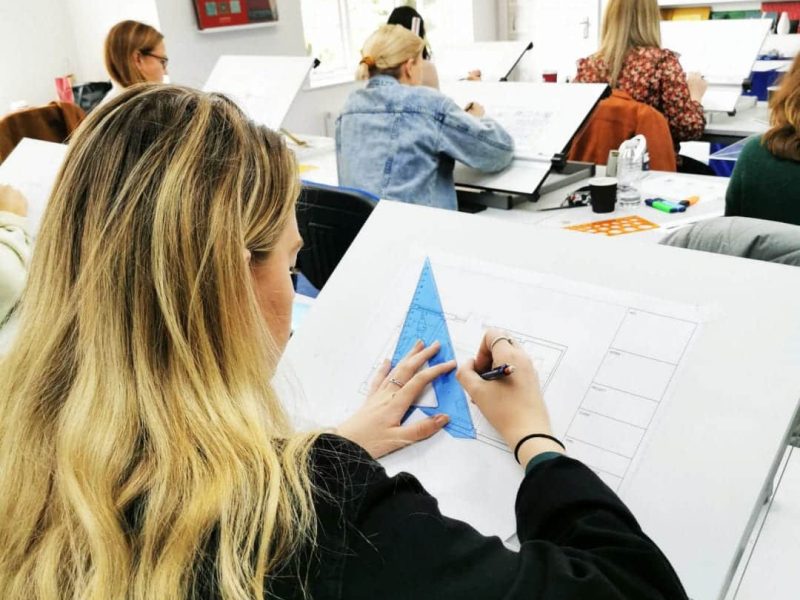
A good designer creates spaces that serve specific functions and make users feel a certain way, while still satisfying building codes and health and safety regulations.
Interior design involves a multitude of processes and skills.
Often, for interior designers working solo or without the benefit of a specialised team, they become a jack-of-all-trades and master every single one!
So what areas will you need to become knowledgeable in?
Firstly, technical areas like space planning and traffic flow, colour theory and its psychology, lighting, materials, and furniture design.
You’ll also need to acquire skills in creative thinking, problem-solving, project management, and client management, as well as keeping up-to-date with developments in materials, technologies, regulations, and trends.
So, learning the tools of the trade is essential.
“Having the technical know-how and correct design approach will give you and your clients greater confidence – and avoid serious mistakes and costly delays.”
To master the tools and techniques of interior design you need to invest time and effort into getting an education and professional qualification. This could be something like a diploma interior design course or a more in-depth bachelor’s degree in interior design.
To become an interior designer, you’ll need to dig a little deeper and research areas of growth or find where your true passion lies.
If you love store design or visual merchandising, then studying Retail Design may be a good avenue to explore. Or if you find yourself in awe of old buildings and period architecture, then Heritage Design may be your calling.
Do you look at how products are showcased at events or always think you could do better yourself? You could look to specialise in Exhibition Design.
Love spending time outdoors? Many designers are now asked to design outdoor spaces along with interiors, so becoming a Garden Designer might be the thing for you.
Whatever it is, find your real passion. Ask yourself what you enjoy, what gets your brain ticking and creativity flowing.
Make sure you do proper research into schools offering interior design courses. Choose a program that is reputable, accredited and gets you off to a good start in your interior design career.
3. Show Your Personality Through a Winning Portfolio
This is a given for anyone looking to work in any design-related field, but its importance cannot be underestimated:
Your portfolio is your passport into the design world and you cannot become an interior designer without a portfolio that you’re proud of.

Let your design vision and values come through, even if you’re showcasing different interior styles and projects. You can show the breadth of what you can do or position yourself as an expert or specialist in a certain area.
The internet is packed with examples and templates you can use as a starting point, so you have no excuses. Just remember to give it a unique personality and make it shine as your own.
You can also work with a graphic designer if that side of things isn’t your strong point.
Work hard on it! Putting in the effort to create something that’s an impressive and positive reflection of your abilities will mean that you’re more confident presenting to either a client or interview panel if you’re going for a new interior design job.
You’ll also want to refresh your portfolio from time to time to reflect new projects or trends which may be relevant to your specialism.
Get honest feedback from others. If the same comments keep coming up, then it’s likely that a job interviewer or client will also have the same reaction. This is a great way to ‘test your product’ and see how people react to it.
Your portfolio can be a digital flipbook that you can easily share a link to, or something as simple as a .pdf file. You could even go next-level with showcasing your work and personality via a video.
See our tips on creating a great interior design portfolio here.
4. Get Interior Design Experience (any way that you can)
So, you’ve got an interior design course under your belt. Your portfolio is taking shape. The next step to becoming an interior designer is to gain some experience.
It doesn’t have to be a professional job (yet) – just look for every opportunity to ‘learn by doing’!
Here are a few ideas:
- Redecorate your own home as a design challenge but make sure you go through the full process as you would for a client.
- Ask friends if you can help redesign their homes for free – you may get quite a few takers so don’t offer to everyone all at once!
- Spread the word in the community that you’re offering free design services. You could even use social media platforms such as Instagram to offer your services as a prize.
The more experience you get, the more you’ll create contacts, learn on the ground, and slowly build your reputation. Think of this as a trial run with slightly less pressure than with paid work (but you’ll still need to deliver the goods on the project!).
You can also apply for internships at companies or ask to shadow an established designer, even if this involves doing menial tasks. The trick is to be passionate and persistent – even internships can be hard to secure these days and again, your portfolio will help you to stand out from a large list.
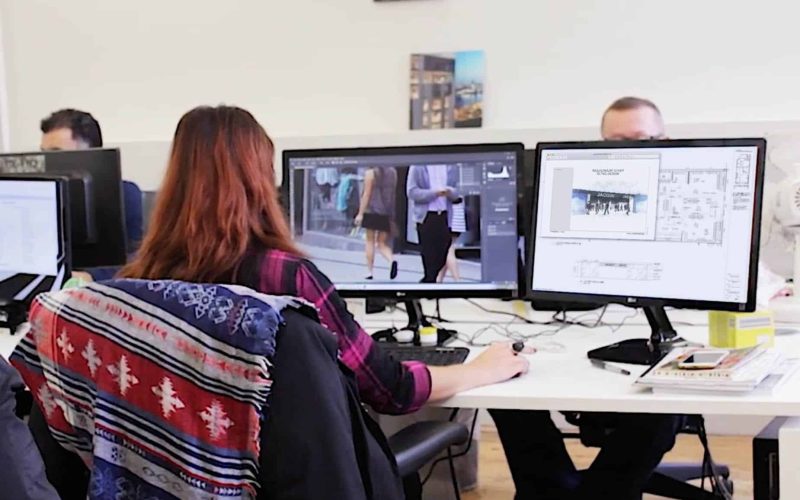
“The best part is that you can get invaluable exposure and find new opportunities just by being in the right environment and soaking up all the learning you can.”
Any interior design experience will also beef up the experience section on your CV while you’re still a beginner and provide opportunities to gather the favourable references that potential employers and clients will be looking for.
Fortune favours the brave remember so put yourself out there!
5. Create Connections
Word-of-mouth referrals are an important source of business.
If your social or business circle is limited, then you’ll need to look at creating new opportunities to raise your profile and expand your network. If you make a few new friends along the way, all the better!
Essentially though, the more people you know, the higher your chances of finding interior design jobs, and the greater the opportunity to prove yourself as an interior designer.
There are also plenty of ways to do this at a professional level. Join professional associations, attend or speak at industry events, engage with people online through sites like LinkedIn, and reach out to influencers in your industry.

And it goes without saying that if you’re shy by nature, you’ll need to step out of your shell in order to create these new connections and increase your chances of success.
Again, this is where social media can be a great tool to help you become an interior designer. Use your portfolio or inspiration to gain followers who may turn into clients.
Creating connections also extends to building up your own services. Look to proactively build an extensive network of suppliers and partners who can satisfy different project requirements and help you offer a wider scope of services.
Suppliers are a great source of referral business too, so always be nice to those you meet on the way up!
6. Understand the Market
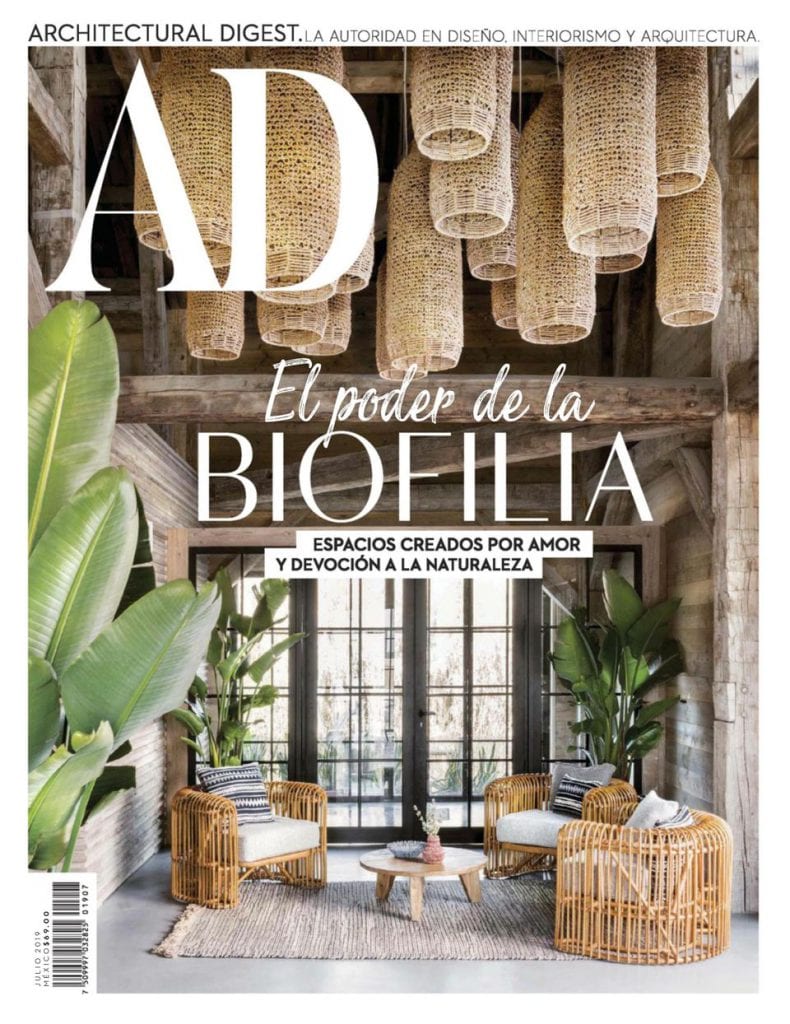
What’s happening in the country or region you’d like to work in?
Is your town or city going through a regeneration phase where all the older buildings are being snapped up and renovated for apartments?
You may be surrounded by ultra-modernist developments or eco-projects. Understanding the small, local market as well as the bigger global view will make sure that your services remain in demand.
Interior design is closely linked to the level of construction and development of housing, retail, hotels and restaurants.
Understanding the stability or growth of specific industry sectors and geographic regions in both the short and long term can guide you on what route to follow.
Another must-do? Keep up with trends.
For example; there’s been great interest in merging the ideals of different spaces – such as blending indoors with outdoors, or blurring the lines between commercial and residential (now known as ‘resimercial’ design).
It’s also important to understand sustainable, ethical and wellbeing issues, which are a key focus in all design fields.
Doing this can be an immense learning curve, but it can make a real difference to the planet, to others involved in the design process, and to those that will use the spaces you design.
Subscribing to online industry newsletters and following influencers on social media is a great way to do this and to ensure that your design approach aligns with what’s happening around you.
Reading interior design magazines and digests, whether online or printed, can also help you stay up to date with key interior design trends. We suggest you start with these:
7. Look at the Big Picture
When it comes to design evolution, the world of interior design overlaps greatly with other creative industries.
What do we mean by that?
Take a look at fashion, art, music, and movies. You’ll find there’s always a common thread, or trend, that runs through creative fields and that changes with time and popular culture.
So in other words: you need to understand how the interior design industry fits into the bigger picture.
Looking at other industries will help you to stay ahead of the design curve.
If you’re going to become a successful interior designer, you’ll need to not just be on-trend but also be able to see the trends coming.
There’s no point presenting the ‘now’ to a client. They want the future, as chances are it’ll be months before your schemes are realised, especially in a commercial interior design project.
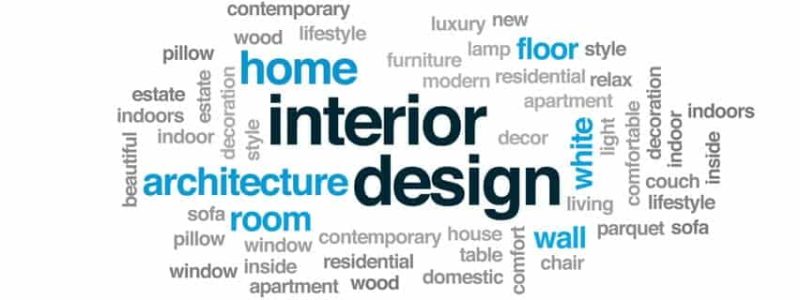
Interior designers work alongside architects, engineers, construction teams, lighting designers, textile designers, and brand and graphic designers.
Don’t be afraid to learn about other creative industries. This broader awareness will inform your designs, guide you on what clients are looking for and help you anticipate new directions and trends.
8. Identify Your Niche
Once you’ve understood the market, the next step is to identify your position and target audience.
Do you want to work with clients in your local vicinity or are you willing to travel further?
Do you have a knack for quirky, Wes Anderson-style design schemes or a love of Scandi-chic minimalism?
You may want to leverage your natural passions and position yourself as an expert in a particular style such as Victorian renovations or biophilic commercial projects.
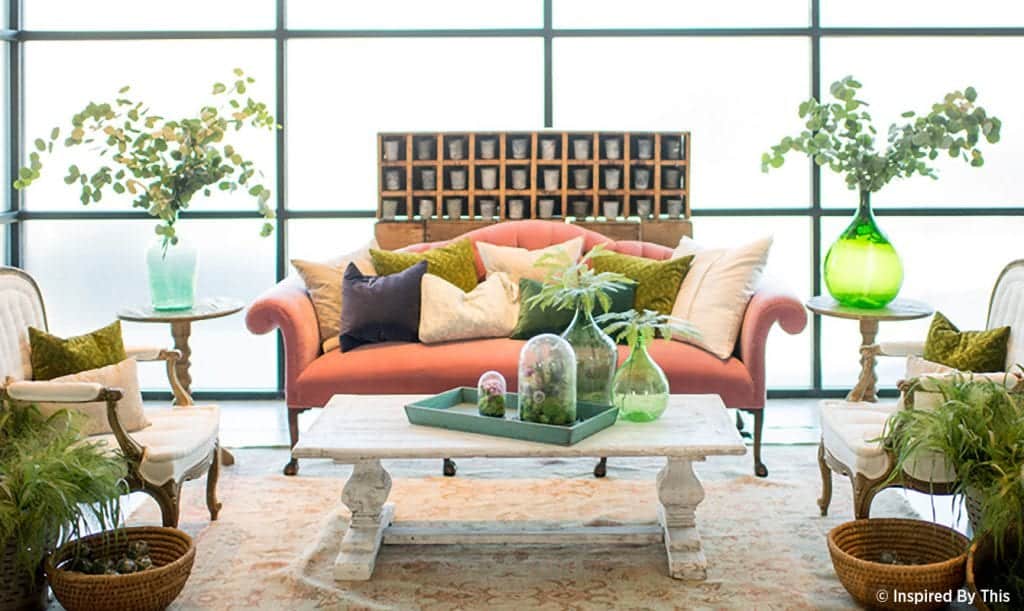
Or perhaps you want to specialise in design for retail, hospitality or heritage spaces?
Look for areas that are in demand such as coffee shop spaces, spa and wellbeing centres or listed buildings.
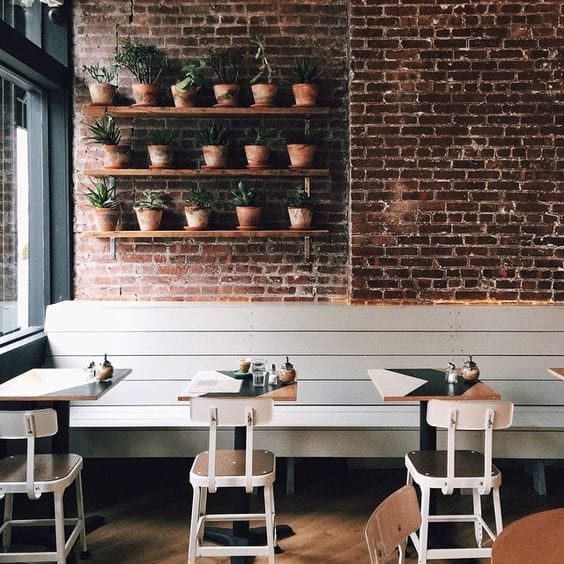
You should also think about your work environment – do you want to work in a design or architecture practice, be an in-house designer for a large retail store, or work independently?
The scope of projects is also up to you – you can design for anywhere from tiny homes to palatial mansions, a home-study to corporate offices, playrooms at home to large schools… the possibilities are endless.
It’s down to finding your niche and where you’re comfortable when you start out as an interior designer.
“Within your sector, look at what competitors are offering and what you can do differently. This can be in the type of services you offer, or how you work and charge your fees.”
For example, there are interior designers who will agree to only provide concepts to their clients and leave the execution up to them, keeping costs low and widening their customer base.
Others choose to provide a pay-as-you-go service where the client pays for the initial consultation and/or concepts and/or sourcing of products.
This can be especially beneficial to corporate clients where lots of different stakeholders get to have a say.
However you do it, make sure your proposition stands out from the crowd – like your portfolio!
9. Find Your Own Voice
…and build a brand around it.
Depending on your positioning and the clients you want to work with, create a brand personality that aligns with this.
This goes for whether you’re working for an interior design practice or creating a brand for your own business.
Remember that branding encompasses a whole range of things.
What People See: Consider your logo design, brand colours and graphics, website, and the type of content you share on social media. This is the first thing that people will see.
What People Read: Determine what it is that sets you apart from your competition and make that the basis of your promotions. Use this to develop your public ‘tone of voice’.
What People Feel: Remember that purchasing decisions are based on more than facts: they’re based on emotions and how well brands connect with their clients.
There’s no point in designing an ultra-modern brand if you want to specialise in restoring period properties.
Make sure your social media profiles are representative of your style and not just pictures of your dinner or dog!
Showcase your best reviews and most importantly be true to yourself.
You’ll have plenty of time to get out of your comfort zone but what you put out there now will be the lasting impression for your first interior design clients.
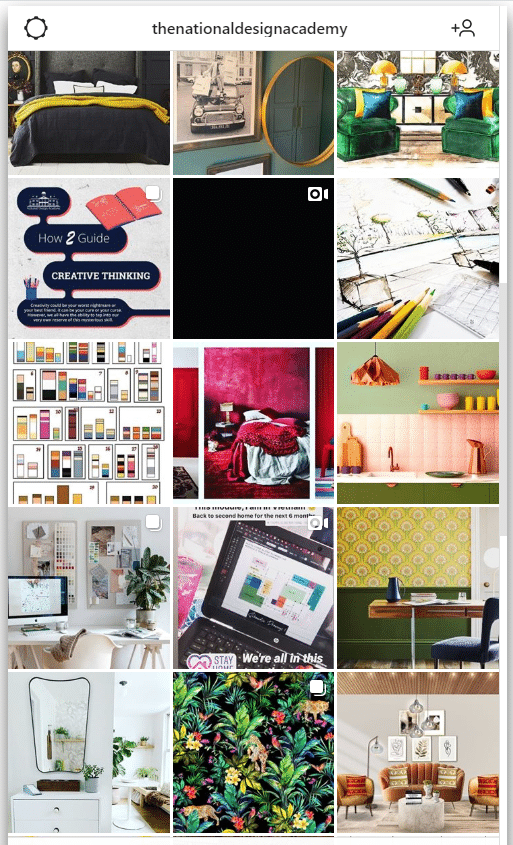
10. Toot Your Own Horn
You may be the best interior designer out there, but if people don’t know about you, your awesomeness is going to waste!
There may be a lot of value and credibility that comes with word-of-mouth, but you can speed up the process of getting your name out there with some good old-fashioned self-promotion.
Don’t be too shy to tell people around you what you’re doing, even if it’s in casual conversations.
Get on social media platforms like Instagram and Facebook and share examples of your work.
Create Pinterest boards to show off your design vision. Again, think about how to do things differently and stand out from the crowd.
Start building a reputation.
Create articles on LinkedIn that discuss a popular topic or get in touch with industry magazines to feature your designs or write editorials about trending topics.
Be available for interviews and comment requests (try registering as an expert on sites like HARO) or contribute content through an expert column.
If you want to become an Interior Designer, entering competitions is another good way of gaining credibility in the industry.
Scour the internet for interior design competitions, awards and bursaries for special projects and then shout about it from the rooftops the moment you get even shortlisted.
Competition is fierce in this industry so every bit of good PR counts for something.
11. Brush Up on Your Digital Skills
We know you have Pinterest and Instagram nailed, but are you up to speed with the industry digital tools?
There are many design software programs that can be learned, such as Revit and 3ds Max, but it’s a good idea to at least know industry-standard programs like AutoCAD and SketchUp Pro.
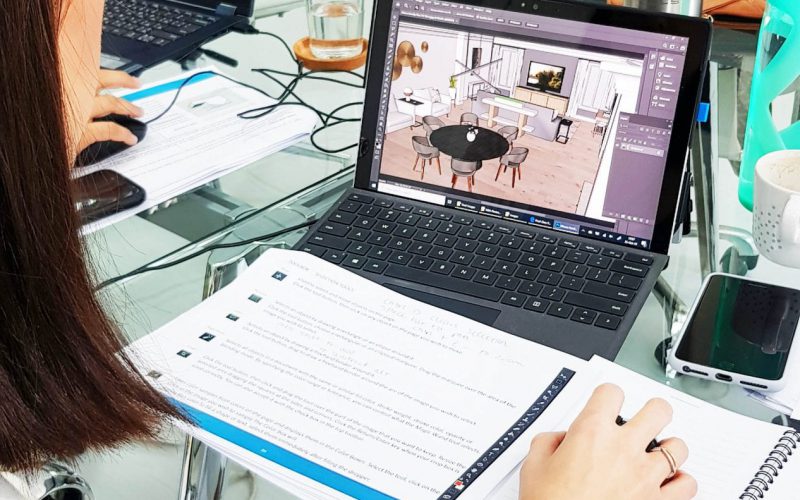
Becoming an Interior Designer is about more than creating pretty presentation boards.
These tools can help you improve your work speed and accuracy, clearly communicate your concepts, and make them look more professional and attractive.
Presenting your work in an industry-standard format will boost your credibility immediately with your potential employer or client and help you clearly communicate your ideas in a professional way.
This isn’t to say that you should focus on all the bells and whistles at the expense of the quality of your design concept.
“Your design should be good enough to speak for itself, even in the form of a simple sketch. These digital tools are just adding an extra boost – especially if hand-drawing is not your strong point.”
Many of these programs can be learned through free tutorials on YouTube or by enrolling on a short course such as Udemy’s Master SketchUp.
12. Become a ‘People Person’
By that, we don’t mean you need to become a social butterfly… but you do need to understand that interior design is less about fabrics and colours and more about people.
Spaces are designed for people to use, after all. That’s why so much of the success of a design plan comes not from how it looks, but from how much it fits in with the client’s personality and lifestyle.
This applies equally to commercial and retail spaces that have corporate guidelines and brand values to abide by.
Developing an intuitive sense for what people would like is invaluable to your work, as is learning how to manage them and their expectations.
Clients can be indecisive or become difficult to work with. If you want to become a good interior designer, you need to be a good listener and pick up on clues on their personalities, tastes, and their satisfaction with how the project is progressing.
Communicate clearly and regularly, and deal with issues before they become crises.
“Remember that the client has placed their trust in you and your vision, so it’s important to genuinely care about how they’ll benefit from your design once it’s brought to life.”

On the other extreme, bending to a client’s every whim can result in a disjointed, impractical or unattractive scheme. A degree of firmness is needed when working with clients, since you are the expert in the situation.
In addition to clients, interior design also involves working smoothly with a variety of specialists like suppliers, project managers, graphic designers, marketers, as well as furniture, lighting and garden designers.
The success of any project will greatly rely on the level of teamwork and communication involved.
13. Nail That Interview or Meeting
A slick portfolio and packed CV will get you through the door, but it’s your personality that will seal the deal and win over an employer or client.
Giving off the wrong vibe can discourage others from wanting to work with you, even if you’re a better designer than other candidates.
Again, interior design is all about people…
“Be confident, professional, positive and passionate in your interviews, and allow some of your personality and point of view to come through.”
Being unprepared for an interview or client presentation is one of the quickest ways to make a bad impression.
If you’re applying for a job, take the time to research your interviewer – including the company, its competitors, and the market it operates in – and try to come up with some ideas or recommendations. If you’re not interested enough to do this, then you won’t seem very keen for the job.
Try to get as much interview or presentation practice as you can. This will get you comfortable with the idea of having your behaviour and skills assessed by others, and also help you understand the impression you’re making. It’ll also help you get used to having your work critiqued or questioned without feeling defensive.
One of the most important things for any designer to master!
There’s plenty of free advice online on how to improve skills for job interviews and client presentations.
Make Google your friend and polish up on those skills!
14. Seek Partners for Projects
Notice how practically every new song or fashion collection right now is a ‘collab’ between two artists?
Collaborations are the order of the day and interior design is no exception.
Collaborating with a similar designer can strengthen your brand position and establish you as an expert in your area.
Think of it as building your brand by association. Alternatively, you could partner with a very different designer to get exposure to a wider and otherwise inaccessible audience.
This also adds an element of uniqueness and surprise.

You can even go across sectors or industries and partner with a garden designer, furniture designer, product designer, or lighting specialist… or any artist that shares your brand values.
Some very successful practices started as collaborations between architects and interior designers or textile designers and interior specialists.
Do this and you’ll learn more, find new connections and opportunities, and hopefully find an ally and someone to bounce ideas off for the rest of your career!
15. Become a ‘Forever Learner’
There’s never a dull day in the life of a designer.
Styles evolve, trends are cyclical, technologies advance and the challenge for a sustainable future is always intriguing.
To ensure that you never run out of work, you need to become an interior designer who stays at the very cutting edge of their craft.
As with any career you pursue, continuous learning and development will help you stay on top of changes in your industry and ensure your knowledge and skills are up-to-date.
Doing this also elevates your skills and enables you to take on more senior roles. Because let’s face it, you probably don’t want to get stuck doing the same thing for years with no career progression.
So how to keep your evolution going?
You can look at learning or improving specific skills or diversifying into a new specialism, or simply look at taking your education to the next level.
For example, if you start your career holding a diploma in interior design, you can progress to studying a bachelor’s degree, while working simultaneously and building experience.
This will help you gain more professional credibility and keep up your motivation.
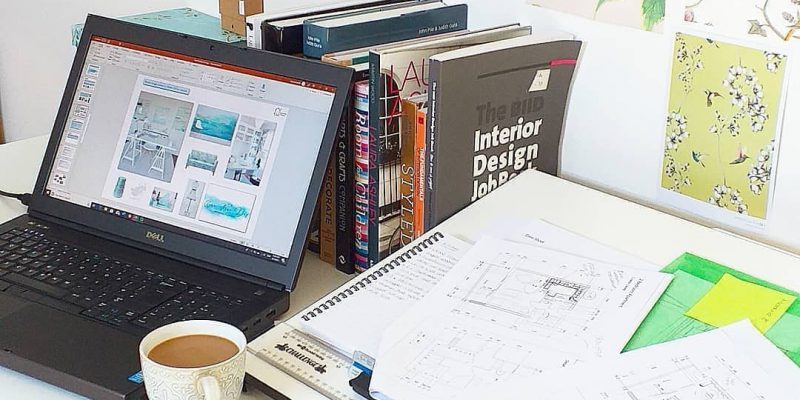
If you’re looking for a senior management role in an interior design company or a teaching role, then a Master’s degree could be the next natural step in your study progression.
Whatever you decide to do, don’t stop learning.
Stay ahead of those behind you as there will always be new trainees snapping at your heels!
So…You Still Want to Become an Interior Designer?
So, there you have it. What we believe are the essential ways to make your mark in the world of interior design.
If there’s one more thing to remember it’s that there’s no such thing as an overnight success. Get started in bits and pieces and take small steps when and where you can.
The above is not a checklist that can be ticked off once and for all, but a guide on what needs to be considered at varying stages of the interior designer’s journey.
And if you’re passionate about interior design, then putting your plan into action shouldn’t feel like a lot of work anyway.
One final tip… Believing in your abilities is a big factor to achieving success. Lack of confidence, self-doubt, and fear of failure can be powerful self-inflicted obstacles throughout a designer’s career.
It takes bravery to pursue any creative profession. But without the risk, there’s no reward.
So take the leap. Acquire the right skills, build a wide network, create a unique offering, and aim to continually learn and develop your abilities.
Before you know it, you could be well on your way to becoming the next Nate Berkus or Kelly Hoppen.
Ready to Get Started?
If you’re considering a career as an interior designer, why not join the Diploma or Bachelor’s degree courses in interior design offered by the National Design Academy. We’ve specialised in teaching interior design for over 30 years and all courses are UK accredited and globally recognised.
View Our Courses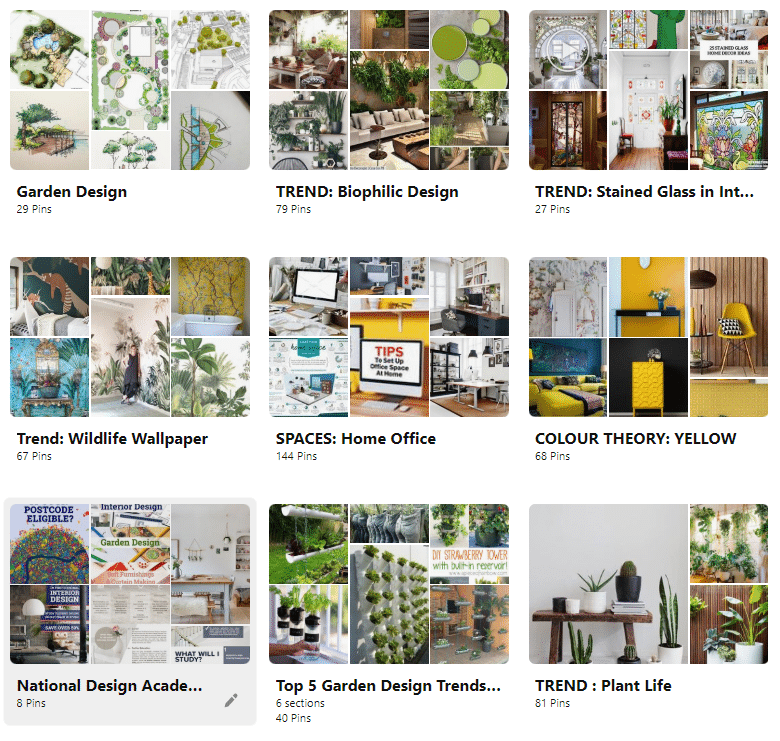
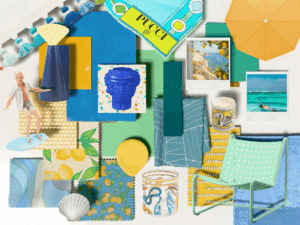
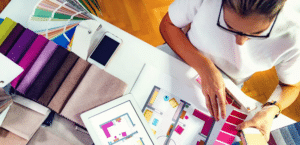
14 responses
Informative and insightful. Thanks for writing and sharing this post with us.
very wonderful blog thanks for posting.
Informative and insightful. Thanks for writing and sharing this post with us.
Great Blog Post. Very Informative and professional..
Thanks for sharing such valuable information with all of us.
This article is very informative. Thank you for sharing such useful information.
THIS IS VERY USEFUL AND INFORMATIVE BLOG.
This was simple and well put together, i have a dream to become an interior designer and this has helped me break down the things i should have at hand before fully immersing and investing. thanks
You’ve written it so well, and you have some really good ideas. This post is outstanding!
I follow your blog regularly and got great information. Thanks for an insightful post.These tips are really helpful. Thanks a lot.Keep it up. Keep blogging.!!
“Fantastic blog! Your attention to detail and creative use of color and texture in interior design is truly inspiring. Your posts offer a wealth of ideas and tips for anyone looking to improve their living or working space. I look forward to exploring more of your interior design insights and can’t wait to see what you have in store for us next. Keep up the great work!”
Thank you for sharing. Nice information.
Your interior design tips are like gold nuggets for me. The way you explain color palettes and spatial arrangements makes the process feel approachable and exciting.
This guide is a fantastic resource for anyone looking to break into interior design! The 15-step plan is straightforward and practical, offering valuable tips on building creativity, gaining experience, and finding a personal design style. It’s a great way to start a fulfilling career without overwhelming risk.